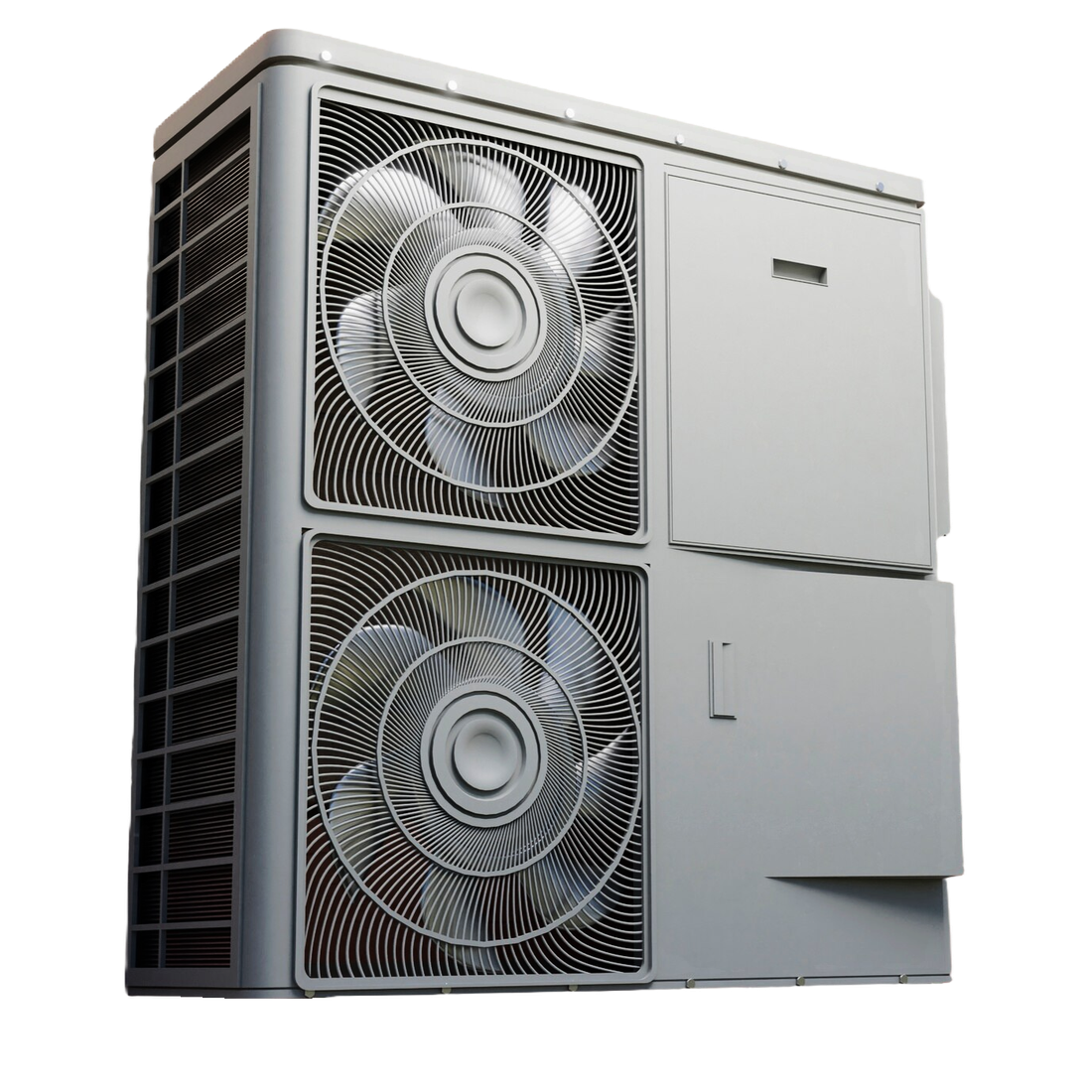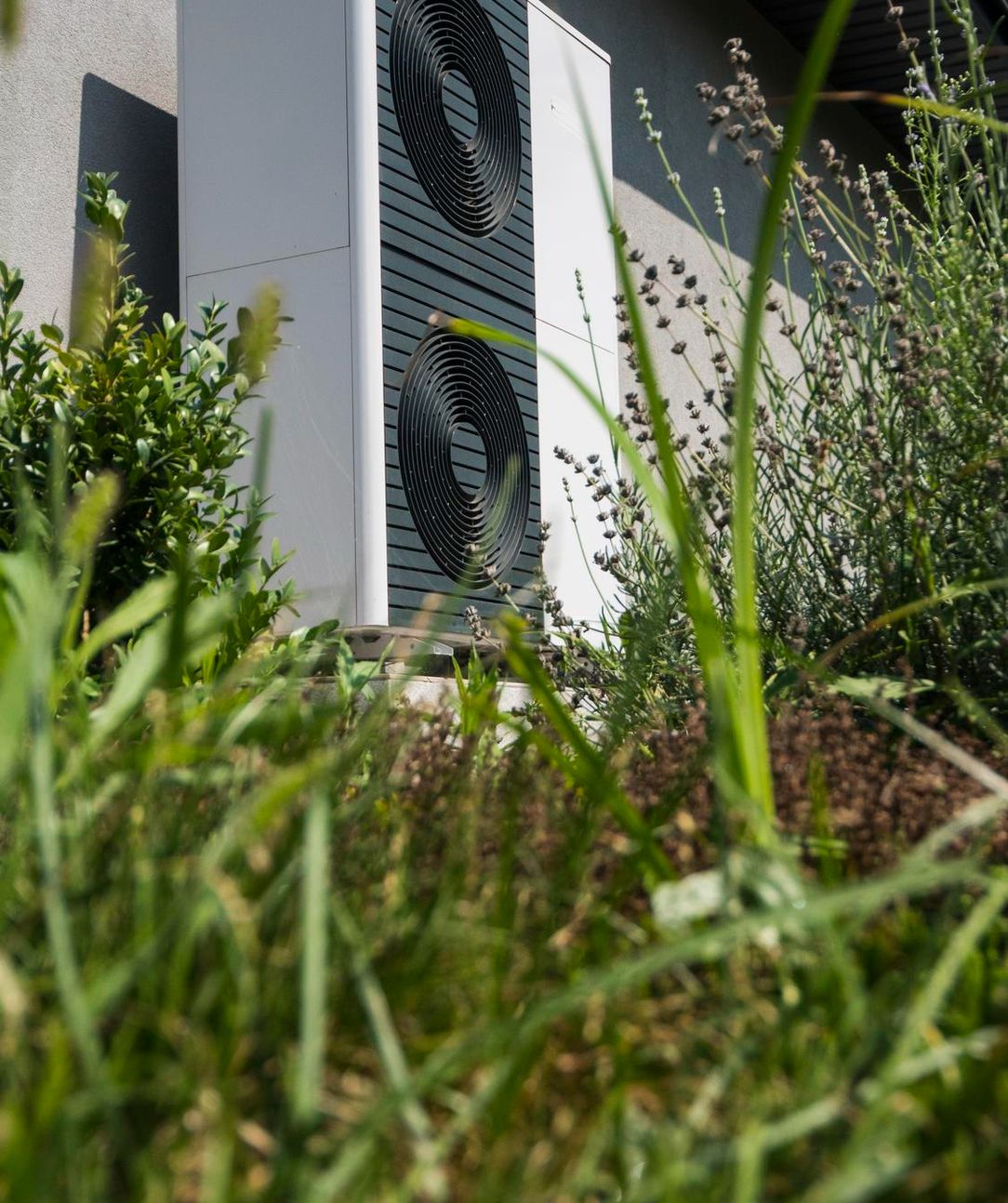Efficient Energy Use with Air Source Heat Pumps
- Environmentally friendly
- Low Maintenance
- Safer than combustion boilers
- Long lifespan
- Can be paired with solar panels
- Minimal noise


What is an air source heat pump?
When you see a picture of an air source heat pump it looks like a huge fan in a box - but there is much more to the system than that.
Fan
This is the external part of the system that draws air into your home. Drawing ambient air from the outside and using it to kickstart the whole heating process.
Compression
The refrigerant gas isn’t quite warm enough to heat water at first. So, to increase the temperature the cool gas is passed through a compressor to ‘squish’ the molecules together, causing it to heat up.
Heating your home
The heated water is then fed into the radiators, or underfloor heating, in your home. The condensed gas returns to a liquid and the whole process starts again. All this keeps your home warm and snug no matter what the weather is like outside.
Refrigerant
The air from outside is passed over a series of pipes full of refrigerant. This is a cold liquid that reacts to any change in temperature. The external air heats this liquid up and it becomes a gas.
Heating water
The super-heated gas is then fed into pipes in a water tank. This is where the heat transfer happens - the pipes heat the water, and the water cools the refrigerant.

So, what are they and how do air source heat pumps work?
In the simplest terms, they behave like a reverse fridge. They take cold air from the outside and, through a series of clever processes, create hot air that can heat the water in your central heating.
Along with solar, they are classed as a renewable energy product as they use an inexhaustible source – air!
Combi-boilers burn gas to create heat, which also creates nasty emissions, whereas an Air Source Heat pump uses pressure and evaporation to do the very same thing.
Get A QuoteAdvantages of Air Source Heat Pumps

Air source heat pumps (ASHPs) are between 200-400% efficient. To put that into context, it means for every 1 kWh of electricity they use, they produce between 2 and 4 kWh of heat.
Air source heat pumps use the outside air to create their heat. Even if the outside temperature is below zero degrees, a heat pump uses that air to work it’s magic and heat your home.
The UK Government, no matter what the party, are keen to move us to a carbon free future. This means they are offering incentives to improve your home’s carbon footprint. One such initiative is the BUS, Boiler Upgrade Scheme, that’ll allow you £7500 towards a new Air Source Heat Pump.
Frequently Asked Questions
ASHP is simply the acronym for air source heat pump.
Air source heat pumps are specifically designed to work with central heating systems. The older your system the more likely it will be that you will need to replace a few radiators here and there. If you have underfloor heating you will, in most cases, be air source heat pump ready.
Air source heat pumps are far more efficient than a gas boiler, saving you around a third on your average gas bill.
A heat pump is a system that draws heat from an external source ---like the air, ground, or water---and uses it to warm your home's hot water and central heating. You can think of it as the opposite of a fridge.
Have you heard a noisy heat pump? Or have you been told they are noisy? Or perhaps read it? They're not noisy anymore. Being honest ten years ago, they were. The technology wasn't as good. It's far better now and most have a sound level no higher than normal conversation. A properly installed heat pump should have a noise calculation done to ensure that the chosen location meets the regulations regarding the noise level at adjacent properties. If you hear a noisy heat pump, it has been installed incorrectly.
A heat pump runs at lower temperatures than a traditional fossil fuel system, which results in greater efficiencies. In most cases your existing pipework will be adequate, but you may need to upgrade some radiators. In many older properties, the existing radiators are single panels, and you would typically need to upgrade these to modern double panel radiators.
Heat pumps are a very efficient way to heat your home, and they do offer large savings. especially for properties with mains gas, oil or LPG. As we have seen over the last few years, fossil fuel prices fluctuate significantly. Replacing Oil or LPG boilers with an air source heat pump can save around 30% on your fuel bills. With gas boiler systems, the savings aren't as dramatic. Typically, it is more like a 5-10% saving instead. According to the Energy Savings Trust, air source heat pumps with an efficiency rating of 300% can save the average household £4,891 over 20 years compared to a gas boiler.
This is another common myth we hear. Air source heat pumps have the capability to remain efficient even in extreme cold; they continue to function right down to -20°C. FUN FACT: In the last 30 years, it has only fallen to below minus 20 once in 2010 and that was in Aberdeenshire Scotland and in the middle of the night.
In short, a lot less than you probably think. It's another common myth. Of course, the model and size of the heat pump depends on the heat requirement for the property so varies slightly. Most heat pumps are roughly 1m wide x 1m tall and sit against an external wall.
Again, this is another common question we are asked. It also relates to potentially the biggest change you might need if for example you currently have a combi gas boiler in your home. With a heat pump, you need a specifically designed heat pump cylinder which needs to be located inside your house. Most commonly we install these where the gas boiler cylinder or combi boiler used to be but there does need to be enough space to get good access to it for servicing etc.
If you have a combi boiler. Then you may need to find the space for the cylinder. Often it can go where the combi boiler used to be but there are other options. We will assess and advise you at survey of where it could go in your home. Heat Pump hot water cylinders are pressurized systems so they can go in lofts or attics because they are not gravity fed.
After carrying out a survey and completing heat loss system calculation and estimating running costs. A typical installation takes around 3-4 days. It does depend on whether radiator upgrades will be needed. We always try to plan it and execute it as effectively as possible.
Yes they can. They will work with devices like Hive or Nest. But in general most heat pumps now come with their own smart controls. You can even get an app with it too. We can make it as complex or as simple as you want. If you want to know the flow rates and the COP day by day, we can provide that.

Why choose UK Energi for your ASHP?
At UK Energi, we understand moving to Green Tech can feel daunting and, frankly. confusing.
That’s why our team of experts are always on-hand, ready to answer any questions, give advice, and help you choose the right systems to meet your needs.
Whether that’s improving your central heating efficiency with an air source heat pump, generating your own electricity with our solar panel solutions, or charging your electric vehicle. We’re also on hand to help you install your chosen tech and make sure you’re getting the most from it.
To get started with your air source heat pump installation, fill in the contact form below and we will be in touch as soon as possible.
Get A QuoteWhy Choose UK Energi?
Quality installations, competitive pricing, and unparalleled customer support - that's the UK Energi difference. We're dedicated to making your renewable energy journey straightforward, cost-effective, and rewarding from start to finish.
Our Own Qualified Consultants
Our consultants aren't salespeople, they are renewables experts. They dedicate their own time to learning about the latest developments in renewable energy so they can help you make the best decision.
Local Fitting Teams
We don't use subcontractors, all our teams are employed by UK Energi. We ensure that everyone involved - from installation to commisssoning - is an expert in their feild and qualified to the very highest of standards.
In-House Technicians
It's not just the installation teams that need to know how our systems work, we also have experts in the office that can help with any quieries. We pride ourselves on our aftercare and customer service. We're here for you well after installation.
Family Business
While we are growing every day, we are still dedicated to giving the personal service we started with. We believe that our family ethics help us to build long term relationships with our clients and customers.